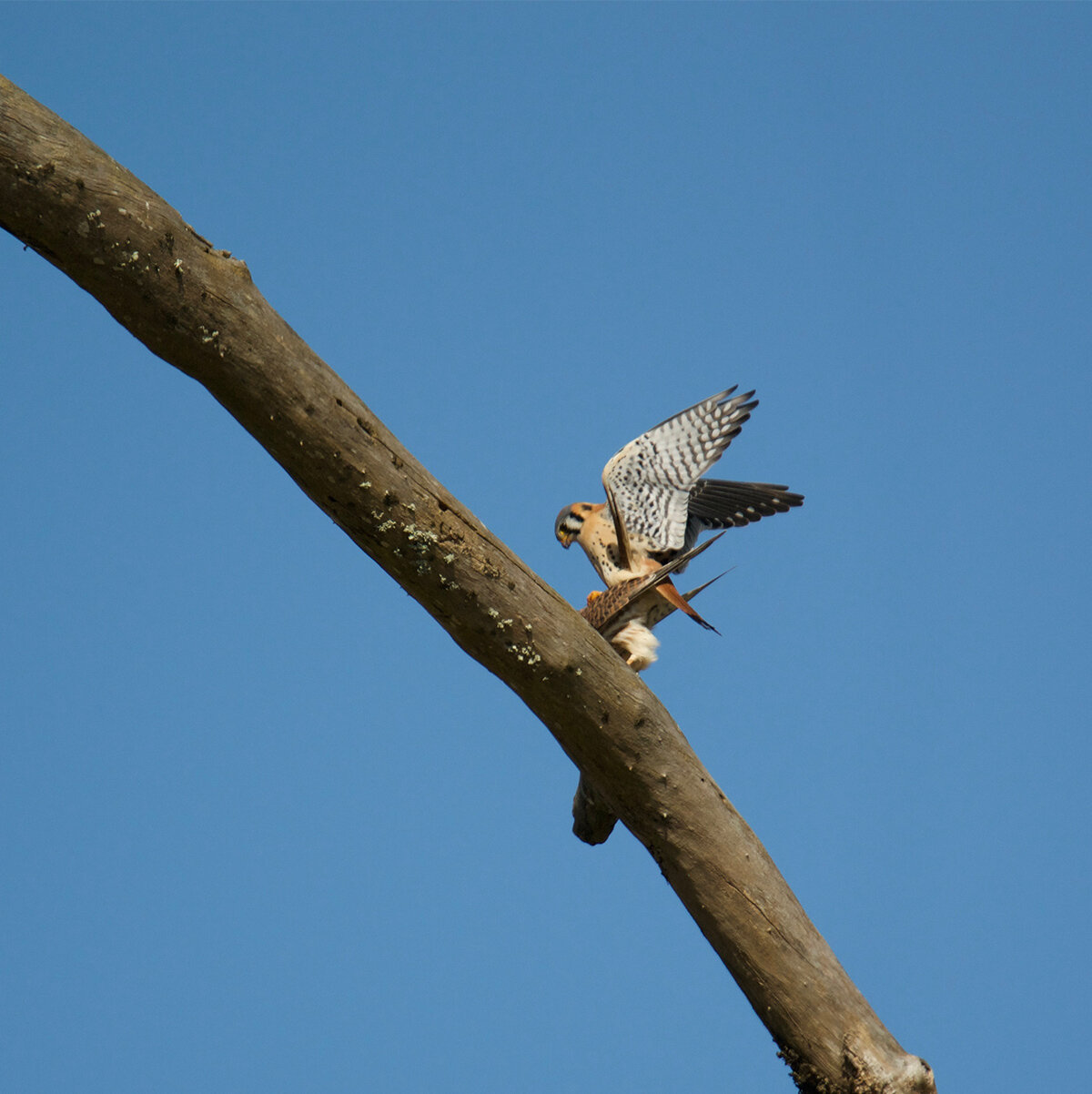For about a week, I have been watching a spotted towhee and a black-throated gray warbler feed this fledgling. From looking at photographs online, I think this fledgling is a brown-headed cowbird.
Cowbirds don’t build nests. They lay their eggs in the nests of other birds which will feed and nurture the cowbird when it hatches. A common host of the cowbird is the spotted towhee. Cowbirds don’t have brilliant colors or patterns, but they are a fascinating bird. Below, I included a link to a small, interesting article about them.
So maybe the towhee is the foster parent of the cowbird and somehow this warbler got its wires crossed and is helping out. All About Birds had this to say about it: “…bird parents have an intense instinct to nurture young at the time their own young are dependent. Sometimes if a bird loses its own young, it ends up feeding another chick who is begging.”
So, I’ll just keep watching and see what happens. So far I have been able to find this little fledgling each day. That said, it is getting bigger and more mobile — it flew around the creek trail quite a bit today, but it is more or less staying in the same general area. If you want to go check it out, go up the creek trail where the picnic tables are. Today it was hanging out near the first bench you come to on the right that is next to the creek. Just listen for the twittering sounds of a begging bird.
Today, I saw a juvenile towhee nearby being fed, but I’m not sure if it is the same parent towhee that it is feeding this mystery fledgling. Also today, about 50 yards away I saw a female cowbird being chased away from the nest of a western wood-pewee.
Check out these small, interesting articles:
https://www.audubon.org/news/how-does-cowbird-learn-be-cowbird

































































